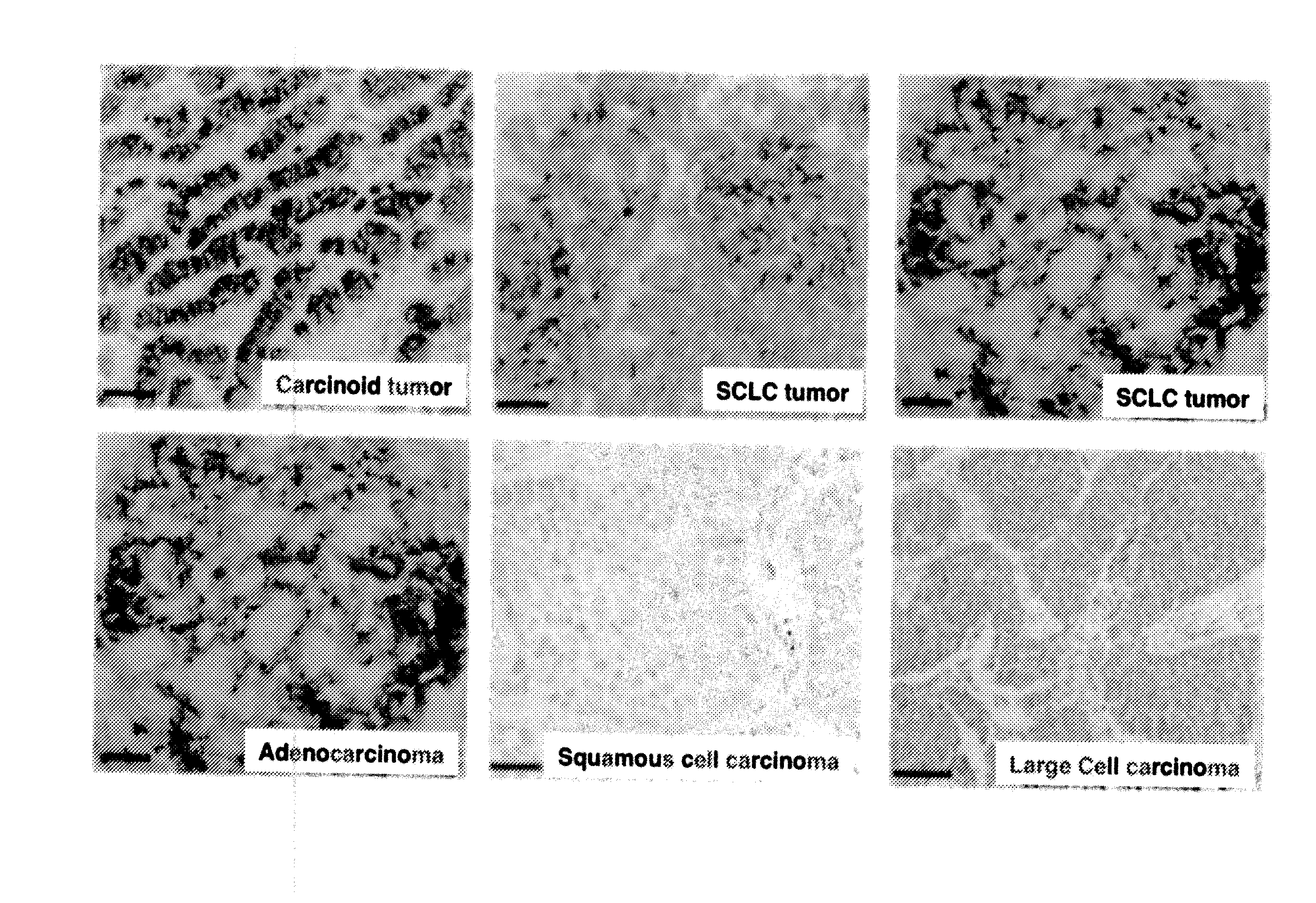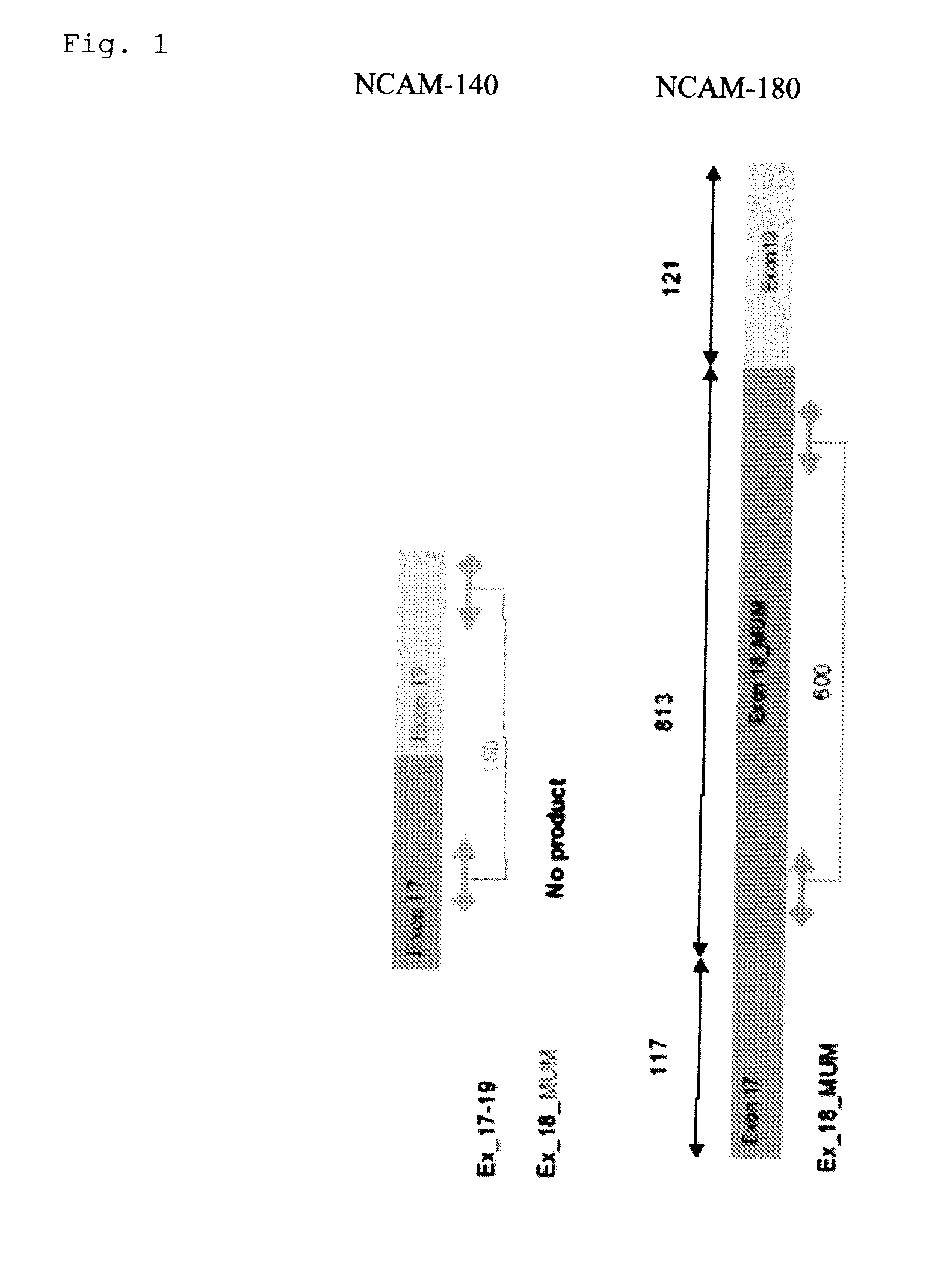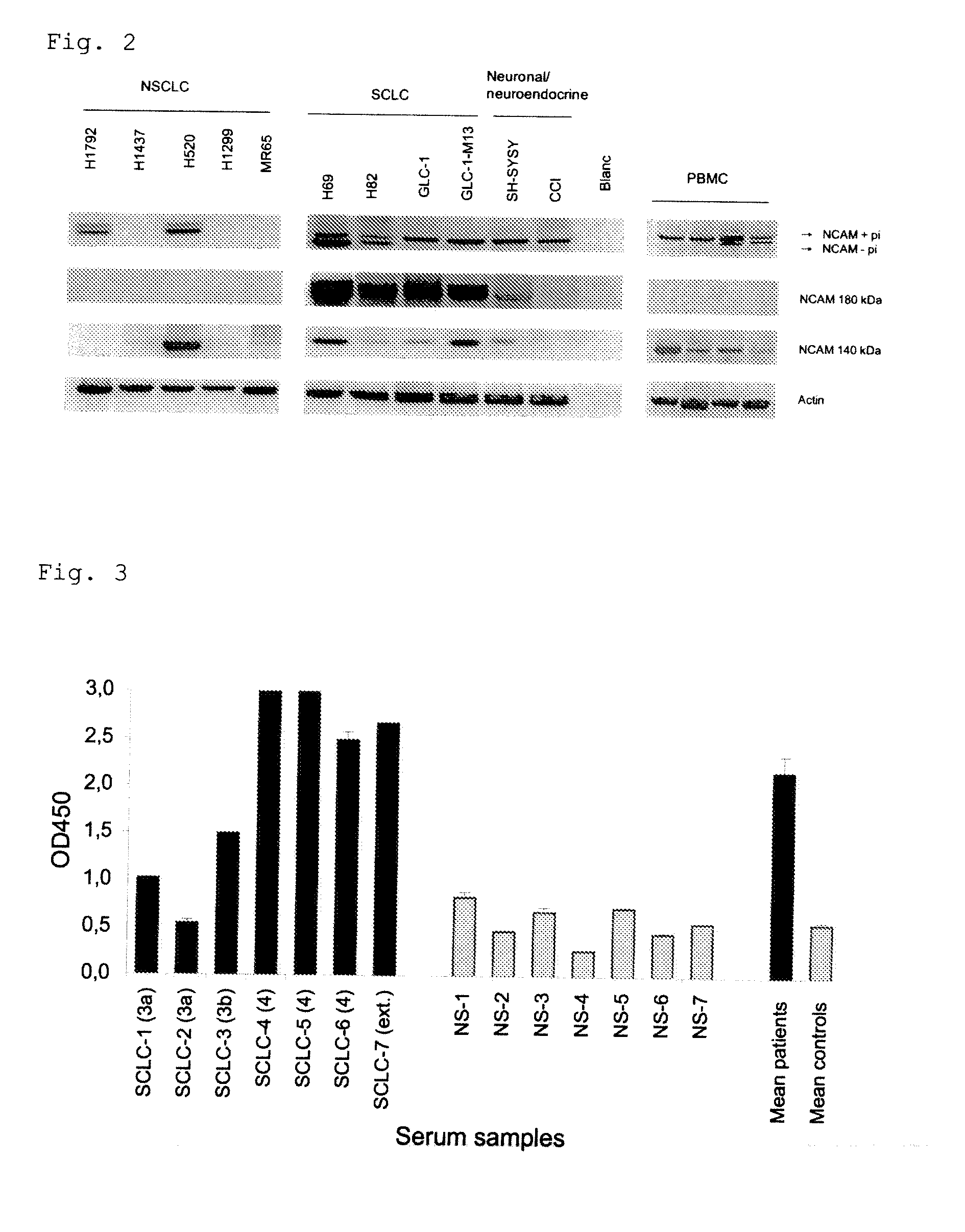Small cell lung carcinoma biomarker panel
a biomarker panel and small cell lung cancer technology, applied in the direction of peptide/protein ingredients, peptide sources, instruments, etc., can solve the problems of insufficient treatment protocols for different types of lung cancer, failure of diagnostic tests, and inability to treat and eradicate lung cancer
- Summary
- Abstract
- Description
- Claims
- Application Information
AI Technical Summary
Benefits of technology
Problems solved by technology
Method used
Image
Examples
example 1
Experiments to Investigate the Differential Expression of NCAM 180 (NCAM Exon 18) in Various Cell Lineages
[0090]Differential expression of NCAM-180 was evaluated in different cancer cell lines and healthy controls, using art known procedures including;[0091]RNA extraction and cDNA synthesis according to standard procedures; and[0092]PCR amplification to evaluate the expression of NCAM Exon 18 according to the principle represented in FIG. 1.
[0093]An expression of NCAM Exon 18 as part of NCAM-180 was found in cell cultures derived from neuroendocrine tumors (SH-SYSY and CCI) and a clear over-expression more particularly in Small Cell Lung Cancer (SCLC) cell lines (FIG. 2). No expression of the NCAM 180 kDa splice variant was found in peripheral blood mononuclear cells (PBMC) of healthy controls. The results for the other cell lines are summarized in table 1
TABLE 1Differential expression of NCAM exon 18 (NCAM 180), and NCAM + pior NCAM − pi in cancer cell lines and healthy controls.NC...
example 2
Serum Markers for Neuroendocrine Differentiation of Lung Tumors
[0094]a. Detection of NCAM Antigen in Human Serum Samples.
[0095]NCAM, comprising the splice variants NCAM 120, 140 and 180 is a neuroendocrine differentiation marker. NCAM is expressed in all Small Cell lung carcinoma's (SCLC's) and in 20% of the Non small Cell Lung carcinoma's (NSCLC). Furthermore, NCAM expression is described for all tumors with neuroendocrine differentiation characteristics, for Natural Killer (NK) cells covering 10% of the total Peripheral Blood Mononuclear Cell (PBMC) population and in the stroma of NSCLC. In normal lung tissue on the other hand, NCAM expression is only sporadically found. Here we show that NCAM antigen can be measured in serum of patients (SCLC sera (N=7, PromedDx)) representing tumors with a neuroendocrine differentiation, whereas no NCAM antigens were found in the serum of healthy controls (N=7, healthy volunteers). We used a sandwich ELISA to measure the level of NCAM as a neuro...
example 3
Experiments to Measure Serum Levels of NCAM 180 / NCAM Exon 18-Antigen
[0100]NCAM exon 18 is specifically expressed in the NCAM 180 kDa splice variant of the NCAM protein. NCAM exon 18 is specifically expressed in the cytoplasmic tail of the transmembrane glycoprotein NCAM. This NCAM splice variant is SCLC specific (PCT publication WO 2007-104511). Here we show that NCAM exon 18-antigen can be measured in serum of SCLC patients and that the NCAM Exon 18-antigen titer is significantly higher in serum of SCLC patients (N=7) as compared to healthy controls (N=7). These data suggest that NCAM exon 18 serum antigen titers can be used as a biomarker for SCLC diagnosis. The levels of the NCAM exon 18-tumor antigen are measured in the serum samples using a sandwich ELISA. SCLC serum samples (N=7, stage 3a (N=2), 3b (N=1), 4 (N=3) and extended disease stage (N=1)) were obtained from PromedDx, control sera were isolated from clotted blood obtained from healthy volunteers (smokers and non smokers...
PUM
| Property | Measurement | Unit |
|---|---|---|
| pH | aaaaa | aaaaa |
| pH | aaaaa | aaaaa |
| pH | aaaaa | aaaaa |
Abstract
Description
Claims
Application Information
 Login to View More
Login to View More - R&D
- Intellectual Property
- Life Sciences
- Materials
- Tech Scout
- Unparalleled Data Quality
- Higher Quality Content
- 60% Fewer Hallucinations
Browse by: Latest US Patents, China's latest patents, Technical Efficacy Thesaurus, Application Domain, Technology Topic, Popular Technical Reports.
© 2025 PatSnap. All rights reserved.Legal|Privacy policy|Modern Slavery Act Transparency Statement|Sitemap|About US| Contact US: help@patsnap.com



